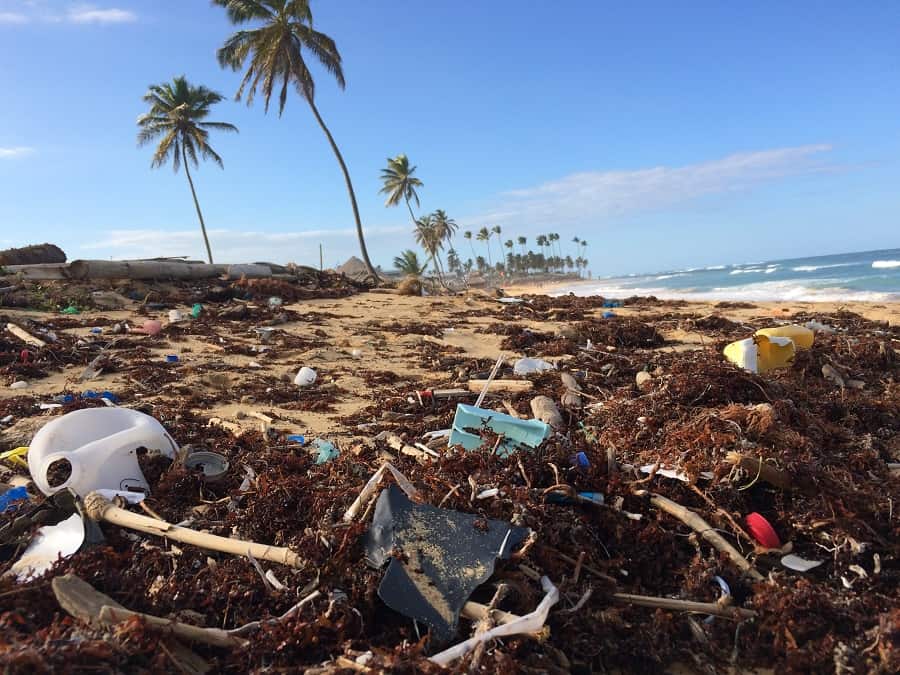
Yesterday was world ocean day and I thought it was time for me to learn a little more about our amazing oceans. Oceans play a major role in the health of our planet. Most of the oxygen we breathe comes from the ocean, it regulates our climate, as well as provides nourishment and medicines. The ocean even absorbs about 30 percent of the carbon dioxide emitted by humans!
The ocean has physical calming effects on humans. When a person goes under water, their heart rate slows down. This mammalian diving reflex also pumps blood to the brain, heart and vital organs energizing a person.
In Wallace J Nichols’ book Blue Mind, he explores evidence that being in proximity to the ocean can improve performance, reduce anxiety and increase professional success.
The oceans that the whole world shares are no doubt essential to human life.
The oceans have serious issues and we need to help. Currently, the biggest issue is the rate at which humans are over fishing. Other important issues are the pollution in the ocean (plastics, microplastics, agriculture runnoff, noise), aquaculture, acidification, rising sea levels, depleted oxygenation and loss of habitat for marine life.
I’ve put together an overview of each of these issues with the hope that if we all become educated we can help to make the changes needed to get our oceans healthy again.
Over Fishing
Humans are removing fish from the oceans faster than the fish can reproduce. This has been going on for far too long and now a third of the world’s assessed fisheries are in trouble.
One of the problems with over fishing is that removing fish from the food chain that feed not only humans but larger sea life. These populations are not able to reproduce making the problem even worse. The delicate eco system is off kilter and according to Professor Callum Roberts from York University the loss of fish populations will have a much greater impact than stresses from future climate change.
Bycatch is an issue caused by unintentionally catching the wrong fish and then discarded back into the water often dead.
This is a very common occurrence in the prawn industry where it is estimated that for every pound of shrimp caught, six pounds of other species are thrown back. Porpoises, shark, turtles, and seabirds also get trapped. Quite often an ocean trawler only captures 5 percent prawns and 95 percent bycatch.
The shrimp industry also has been known to cut down mangrove forests (an essential nursery for marine life and integral to water management and storm protection) to make shrimp farms.
As technology advances, humans are able to fish in deeper waters and farther out at sea. And now 30 percent of the world’s fish populations are over fished. This has helped make many species of fish vulnerable to over fishing because some of them do not reproduce for more than a decade but are getting caught much younger than that.
Big companies in countries all over the world receive governmental subsidies for fishing. These promote over fishing so that they can continue to receive the subsidies.
It is predicted that if we continue along the path we are going with overfishing, all fish will be gone by 2048. This would kill of all marine life that feed on the fish. It would also affect land animals that feed on fish like bears. People would probably start growing more livestock and poultry to make up for the lost protein source.
The tiny marine plants that absorb carbon are usually eaten by fish. The fish then swim down and store carbon in the ocean floor. But without fish the carbon stored by plants would be released when the plants die and the carbon would go back to the atmosphere.
Overfishing is already causing some of these things to happen.
Ocean Pollutions
There are many causes of water pollution (all related to human activity):
- global warming
- atmospheric water pollution
- underground storage leaks
- oil spills
- nuclear waste
- industrial waste
- marine dumping
- sewage
- noise pollution
Most of the physical pollution that enters the ocean each year is plastic. Bottles, bags, cutlery, straws, yogurt containers, fishing nets – human garbage. The biggest source (80 percent) of ocean pollution comes from land and makes it’s way to the ocean.
Plastics in the Great Pacific Garbage Patch
If you haven’t already heard of the Great Pacific Garbage Patch, you better sit down for this one. There is a mass of garbage covering about 1.6 million square kilometers and an estimated 1.8 trillion pieces of garbage floating in the Pacific Ocean between California and Hawaii.
There are five garbage patches in the world. They are created by the ocean currents called gyres that spin in a large circle keeping the contents within the gyre. Although they contain larger pieces of plastic like water bottles, it is mostly made up of microplastics. It is not a floating solid landmass for the most part, and you could sail right through one without even noticing.
One common question is why can’t we just scoop up all of the debris to clean it up. The microplastics involved would be too small to collect. The larger pieces are spread out too far and go all the way to the ocean floor. Plus attempting to scoop it all up for inevitably scoop up the marine life as well.
These garbage patches are growing at an alarming rate each year. Debris from all over the world is being eaten by marine animals and killing them. Birds and marine life is found dead on the shores with a belly full of plastics.
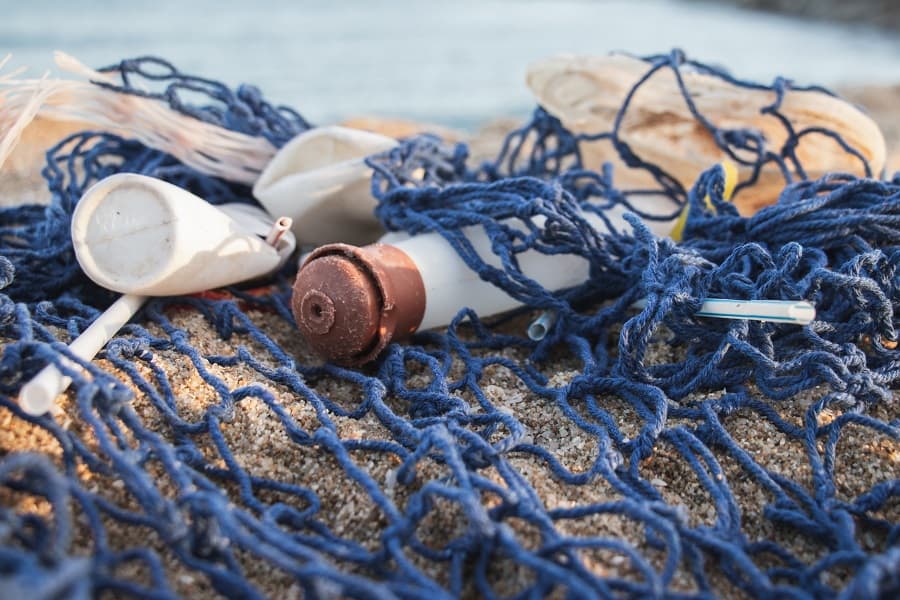
Microplastics Ocean Pollution
Plastic does not biodegrade but it does break down into microplastics. Microplastics are pieces of plastic that are less than 5 millimeters in length. With sun exposure and the force of waves, plastics degrade and release chemicals into the water.
Some plastics called microbeads, are designed to be very small to be used in heath and beauty products. These pass through water ways and get into the oceans. These microbeads are mistaken for food by birds and animals and their production has been banned in the United States.
Unfortunately all of these microplastics don’t only come from plastic bottles but they also come from synthetic fibres. These are being consumed by birds, about 200 pieces of plastic each day.
Microplastic pollution has been found all over the world. Deep on the ocean floor there is a surprisingly large amount of microplastics as well as in the snow in the Arctic.
And the effects of the microplastic is not just from birds confusing them for food. Fish gills are getting blocked, diseases are spread from pathogens on the surface of the plastic, earth worms are not growing and soil chemicals are shifting. One breath of fresh ocean air can be full of microplastics.
Agriculture Ocean Pollution
It might surprise you to see agriculture in this list of ocean pollutants but even farms far inland may contribute to pollution in the ocean. Water runoff from the farm contains pesticides and fertilizers. Often they find their way into streams and sewers that finally end up in the ocean. The locations that have this runoff often see an increase in the number of nutrients which eventually leads to a dead zone in the water. (more on this later)
Aquaculture Ocean Pollution
Aquaculture is also known as water farming. It is the use of closed pens to farm fish in the ocean. There are several issues with aquaculture on the health of the ocean eco system.
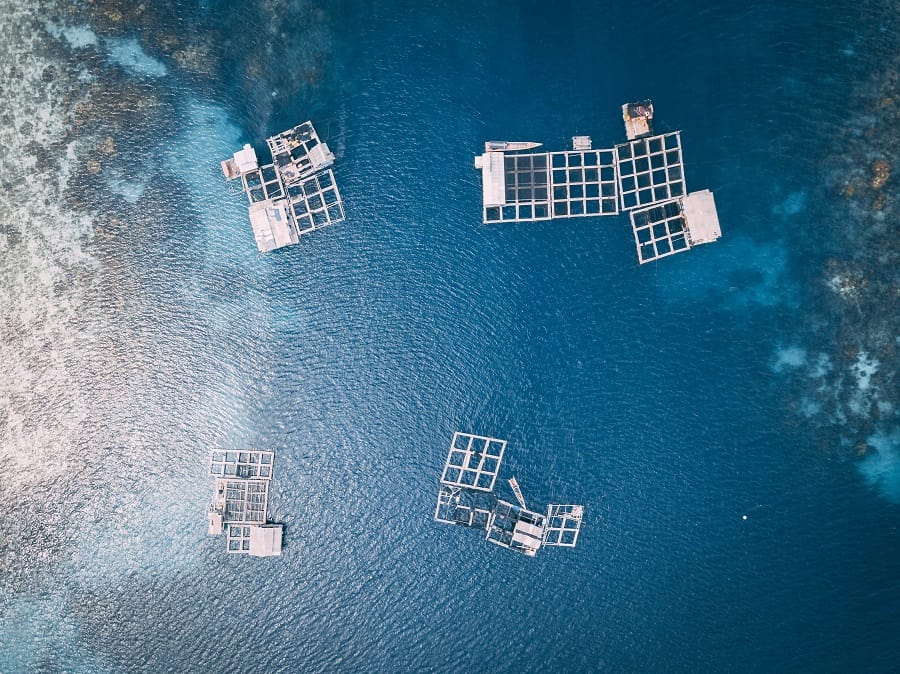
The high concentration of fish also means a high concentration of fish waste (both uneaten food pellets and fish poop) in a given spot. This can smother plants and animals on the seafloor at that location. Often in these populations of concentrated fish, there are parasites that later spread to wild fish.
To combat the issue with parasites and bacteria, these fish farms are often given medicine and antibiotics. This causes bacteria to become resistant to the antibiotics we rely on.
Ocean Noise Pollution
Marine animals use sound to communicate, evade predators, eat and mate. Under water, low frequency sounds travel through water very easily over long distances.
This same low frequency is used by ships to look for oil on the ocean floor. This adds to the sounds in the coeans and confuses some of the signals.
Seismic testing is usually done for months at a time where a high powered air gun is shot every 12 seconds. These blasts are the loudest sound that is made in the ocean and it scares off marine animals even 2,500 miles away. Fish swim into deeper waters, whales eat less during seismic air gun noise. The sound waves also physically damage aquatic life bruising ovaries some crabs, turtle ears are damaged and marine animals weaken immune systems.
Oil Drilling in the Ocean
The oil and gas industry mines the oils from the ground under the water. This usually emits toxic gases and often leads to oil spills. The oil from these spills can last for decades and an attempt to clean up them is done with more pollutants – chemical dispersants.
In 2010, an oil spill in the Gulf of Mexico was leaking into the water for 87 days. That was 200 million gallons of crude oil pouring into the Gulf of Mexico making it the biggest oil spill in the United States history. In one attempt to clean up the spill, they burned the oil on the surface of the water causing other environmental issues. Over 8 thousand animals died from this spill.
Even worse than this was a spill that happened in in the Persian Gulf in 1991. This one was purposely spilled when Iraqi military retreated from Kuwait. Eight million barrels of oil spilled causing a five inch thick slick to cover the Gulf for 4200 square miles.
But the big spills are not the only problem. Even tiny amounts of oil can damage marine life and they happen all the time.
Burning Fossil Fuels is Wreaking Havoc on the Oceans
The ocean is sometimes referred to as “the blue lung of the planet” because it houses the micro-algae that provide the world with as much oxygen as all the world’s forests.
On top of that world’s oceans have absorbed about thirty percent of global carbon dioxide emissions. Just like forests, the ocean acts like a carbon sink but it is paying the price. The rate at which the ocean can absorb carbon is slowing down as it is becoming saturated, more acidic and warmer.
Carbon dioxide dissolves in saltwater forming carbonic acid and later breaks down into bicarbonate ions and hydrogen ions. This increase in hydrogen ions increases the acidity of the water.
The carbon dioxide in the air is causing a rise in global temperatures including the temperature of the ocean.
Rising Ocean Temperature
Coral bleaching is happening because of acidification as well. Coral relies on algae to provide it with nutrients. When the temperature of the ocean increases, coral expel the algae living in them. The algea then become more vulnerable to disease.
Coral will not die from bleaching but they are under more stress. They lose their vibrant colours and turn white. If they can’t get their algae back, they are at a higher risk of dying.
Coral reefs provide habitat for millions of species. Once they die, they cannot come back. Coral bleaching occurs in 75 percent of the world’s tropical reefs.
The Great Barrier Reef has experienced it’s greatest bleaching event in history in 2020. 25 percent of the reef experienced severe bleaching and 35% was moderately bleached. If this continues, the Great Barrier Reef might not recover.
Acidification
In the past two centuries, the ocean has absorbed enough carbon dioxide to increase the acidity of the water by thirty percent. Ocean acidification is problematic for species like clams, mussels, corals and crabs who use calcium carbonate to create their shells and skeletons. These are the creatures often at the bottom of the food chain so when they cannot grow a strong protective shell, they get eaten and cannot survive to adulthood.
With the coral bleaching that occurs, it is difficult for the coral to recover if the acidity is too high. Coral needs calcium carbonate to grow back healthy and ocean acidification reduces the amount of calcium carbonate available to the coral.
Rising Ocean Water
Global warming is the main cause of sea levels rising globally. There are two reasons for this. Half of the sea level rise over the past twenty five years is due to the expansion of water because of global warming. When water temperatures increase, the water expands and takes up more space.
As well, each year glaciers are melting in the summer at a greater rate than they grow in the winter. The runoff into the ocean is greater than the evaporation which causes sea levels to rise.
The ice sheets in Antarctica and Greenland are melting. This melting ice combined with seawater getting under the ice sheets cause ice streams that move faster into the sea.
Why is this an issue? As sea levels rise, cities around the world will experiences coastal flooding and erosion. Higher sea levels also cause stronger storms surges that ruin everything in their paths.
The current predictions are if we allow a global warming temperature of 1.5 degrees Celsius above our current level, the oceans could rise up to thirty inches by 2100. This will put two hundred million people below sea level by that time.
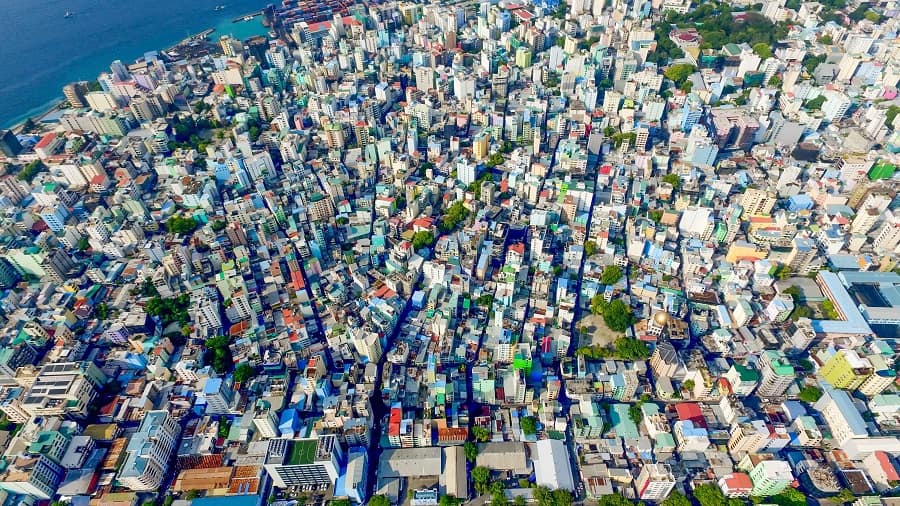
The Marshall Islands, Kiribati, Tuvalu and the Maldives are small islands that are at the highest risk of rising sea levels. They are faced with the choice to evacuate or elevate. They already are seeing more destructive storms than ever before. The coastal flooding is expected to worsen.
Oxygen Depletion In the Ocean
In some parts of the ocean, oxygen has been depleted. There are zones in the ocean where the oxygen is severely depleted – they are called oxygen minimum zones (OMZs) or dead zones. These are usually between 200 m to 1,500 m deep and can be found around the world.
These zones are void of fish or other oxygen using creature. The number of dead zones is growing and becoming a problem for the ocean.
The main reason we are seeing so many dead zones is because of a phenomenon called nutrient loading. This happens when polluted water from urban areas enters the ocean. As well, conventional agricultural practices allow fertilizers to flow into streams and into the ocean.
This increase in nutrients allow for aglae blooms which eventually die and sink to the bottom of the sea where bacterial use oxygen from the water to decompose the blooms.
Rising temperatures slow down the circulation of water and these lower levels of oxygen minimum zones do not get mixed with the oxygenation waters above.
Habitat Loss
Habitat loss has become a large problem for the ocean life globally. Habitat loss can happen with natural disasters like hurricanes, typhoons and tsunamis. In this case, the destruction is usually temporary.
Human activities have been the cause of the more permanent habitat loss. There are many ways in which humans have inadvertently caused major problems in the oceans.
The impacts of habitat loss are far reaching for the entire ocean’s biodiversity. Some of the most important areas for supporting young marine life is along the shores in estuaries, mangrove forests, marshes and wetlands. These have been at risk due to human activities.
The following are some of the human created causes of habitat destruction:
Dredging
Dredging is underwater excavation usually in shallow waters or ocean waters. There are many purposes for this action like making waterways deeper, creating dams or dikes and coastal redevelopment. Dredging is also used to collect materials from the ocean floor that is used in construction such as gravel and sand.
There are many types of dredgers – some of them suck the materials up through a pipe and others use a mechanical buckets to excavate chunks of the materials.
The process of dredging causes a disruption to aquatic ecosystems often with adverse effects. This disruption can cause the release of toxic chemicals like heavy metals and PCB. The increase of sedimentation can impact marsh productivity. It can also interfere with spawning.
Urban Development
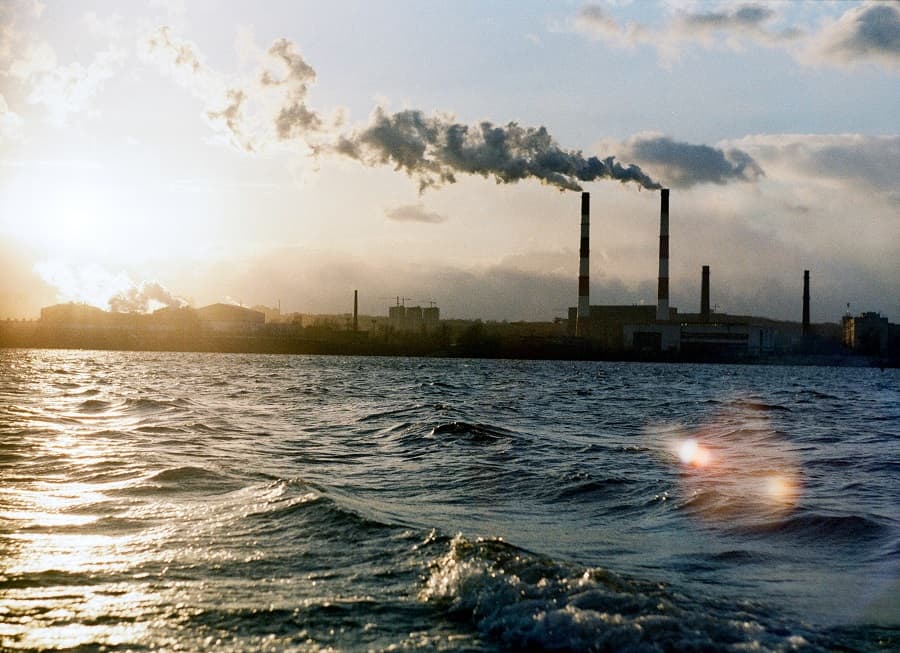
As humans build cities, roads, bridges, marinas etc. we are removing coastline habitat. Even inland dams can decrease the nutrients that runoff, it decreases the freshwater that flows to the oceans (increasing the salt content of coastal waters) and can stop the migration of fish.
Runoff
Eutrophication happens when excessive nutrients collect in a body of water, usually due to the runoff from the land. The runoff from agriculture often has chemical fertilizers which can be found in neighbouring waterways.
This often causes a dense growth of plant life but creates an environment lacking in oxygen. This causes algal blooms which use oxygen and release toxins. The animal life that feeds on this plant life are affected often dying.
Deforestation
Removing the forests and vegetation along the coastlines is a direct removal of habitat for many living things. It can also create sediments that affect the habits not directly involved.
The disappearance of forests causes more harmful runoff that can damage coral reefs. Once again there is often an increase in nutriends in the waters which can cause issues with algal blooms and release of toxins.
Bottom Trawling
Bottom trawling is the act of dragging a large net along the bottom of the ocean floor to collect fish. This is problematic because it disrupts the sediment lying on the floor, displaces marine life and can create harmful algae blooms.
Bottom trawling collects anything in it’s path when only a select species is desired. The unwanted creatures that were mistakenly collected get thrown back into the ocean often dead or dying. 90 percent of what is caught is thrown back. Also a large area of ocean floor habitat is destroyed in the process displacing even more habitat.
There are other similarly destructive fishing techniques like dynamiting and poisoning which destroy habitats along coasts and in the deep sea.
Boat Wash and Off-Road Vehicles
Off road vehicles travel in areas that are not designed for automobiles. They can cause erosion, damage root systems and increase the sedimentation and chemical contamination of adjacent aquatic systems. They also spread seeds driving over plants including noxious weeds, into wanted areas.
Boats cause a different set of issues detrimental to habitat. Watercraft are a frequent method of invasive species entering different waterways wreaking havoc on local habitat. Also, the chemicals used to clean boats enter the ocean poisoning fish and other water life.

Introduction of Alien Species
Alien species are organisms that are introduced into an ecosystem from a different one. Many alien species can be invasive and cause problems for the native plants, aquatic life and human health in the region.
One of the biggest contributors to the transport of alien species occurs in the ballast water of ocean liners.This water is release and added to the ballast to balance the boat and keep it safe for travel. But in this process it transports marine species all over the world.
Shipping is not the only method that causes dispersal of alien species to marine ecosystems all over the world. The aquarium industry and live seafood trade captures and transports marine life. Sometimes species escape or are accidentally released. Canals like the Suez Canal or the Panama Canal create a water way accessible for species to spread.
Often the alien species can introduce harmful microbes and bacteria. These can lead to communicable diseases or epidemics like cholera. Back in 1961 a cholera pandemic began in Indonesia and spread through Asia, the MIddle East and Africa.
Solutions
We need to make changes at many different levels in order to improve the health of our oceans. Most of the big changes need to come at an international level, government level, industry and corporate level.
- no more trawling
- create protected areas
- encourage sustainable tourism
- reduce military sonar
- avoid nutrient pollution in the water
- sustainable agriculture
- international collaboration of marine protection initiatives
We can all make changes at a personal level to support sustainable practices and lead by example.
- reduce your carbon footprint (so the ocean doesn’t get warmer)
- avoid single use plastics and always recycle if you have them
- participate in a beach clean up
- consume only ocean friendly sea food
- invest in organizations that are working towards healthy oceans
- switch to renewable energy sources
Improving the health of our oceans will not only improve the life for fish but will provide more food security, benefit coastal communities and improve job security and many economies.
Aquaculture Farm Photo by Hanson Lu on Unsplash
Industrial Pollution Photo by Viktor Lysenko on Unsplash
Fishing Boat Photo by Paul Einerhand on Unsplash
City by the Sea Photo by Ishan @seefromthesky on Unsplash
Recent Content
Green Parenting - Tips To Raising Environmentally Friendly Kids
It is more important now than ever to raise an environmentally conscious next generation. Children are the future so let's be sure to raise them with a respect of nature! To raise...
Thinking about buying a new (or used) car is a big decision for most people. It is one of the biggest purchases people make in terms of expense and ownership time. The options can be daunting...
